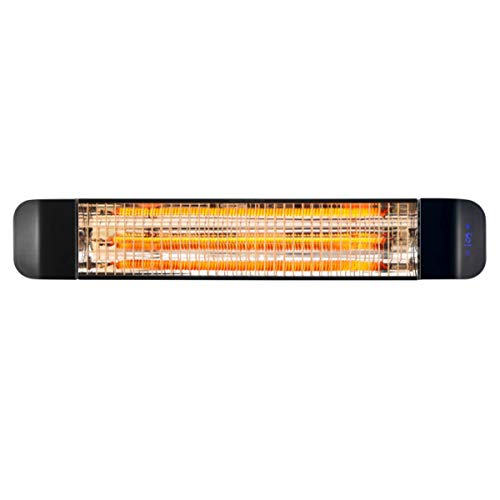How to Choose a Patio Heat Lamp Electric
There are many options available when it comes to heating your patio. In contrast to propane models that require refills electric heaters can provide instant heat by simply flicking a switch or pressing a button.
They also don't emit gases that could pose a health risk. Certain units come with adjustable heat settings to accommodate varying distances.
Heater Type
You can enjoy your outdoor living space well into the evening and throughout the year with the right patio heater. Patio heaters come in many different types that include freestanding propane or natural gas models, as well as ceiling or wall-mounted electric radiant heaters. Your choice depends on the dimensions of your patio, your power source and individual preferences.
The majority of patio heaters use electricity, liquid or natural gas to generate heat. They emit heat through convection heating in combination with radiant heating. The output of heat from patio heaters is measured in watts, which can be converted into British thermal units (BTUs) to provide a comparison. Some models can be adjusted in heat settings to give you more flexibility.
A patio heat lamp combines the burner on top of a pole with a perforated metal screen that reflects the flames and radiates the heat downwards to warm people, furniture and other objects. Some patio heat lamps include a reflective reflector on top of the burner and can be silvered in order to limit the amount of heat is lost upwards.
Gas patio heaters are among the most common heaters for patios. They can heat multiple tables quickly and evenly. They can be portable and run off the propane tank or plugged into your natural gas line with the latter providing more convenience and lower installation costs, but also they require ongoing expenses for fuel.
A increasing number of homes are outfitted with natural gas lines, making these the perfect solution for those who prefer using gas-powered patio heaters. They're easy to install, but do require a specialized and functioning gas line in order to operate in a safe manner. There are portable natural gas heaters equipped with extension hoses that assist in overcoming this limitation however they can also pose a tripping risk and an additional fire danger when not being used.
Safety
The majority of electric patio heaters are safe to use in enclosed areas due to their ability for heat to radiate outward, instead of upwards towards material that is combustible, such as the roof. They are not designed to be used on an unprotected roof. The heater should be placed at a minimum of 6" away from the ceiling or 18" away from the wall in order to avoid fire hazards.

Patio heaters made of propane and gas are typically safe to install in enclosed areas and are protected by an enduring cover designed for open-air use. They are usually constructed of fire-retardant fabric and have a roof which can be closed. The safety concerns with these types of outdoor patio heaters is due to the flame and fumes they emit. They should be kept away from flammable items like chairs and curtains.
Follow the safety and instructions measures of the manufacturer before installing a patio heater or patio heat lamp. Be sure to select one that has UL and CSA certifications, and also read the owner's manual thoroughly. Be especially careful around children and pets and ensure that the heater isn't within their reach when it's operating. Some free-standing patio heaters like EUROM have a built-in tipping safeguard that automatically shuts off the device if it falls over.
If your patio heater is connected to a natural-gas line, it is recommended to check its condition periodically and test it by a licensed professional to identify leaks. If the line is in need of replacement, hire a licensed plumbing professional. A professional will be able to determine if the line should be connected to an underground pipe or not. A professional can also ensure that the heater for your patio is connected to an outlet that is GFCI-rated (ground fault circuit interruptioner) to safeguard against electric shocks and fires.
Installation
The size of the patio heater will determine the amount of heat it emits into the space. super fast reply should be mounted away from surfaces like plastic and wood that could deform. The heater can be mounted on a wall, structure or other surface using conventional mounting brackets. Certain models come with a soft start, which lowers the current peak to protect your circuits.
